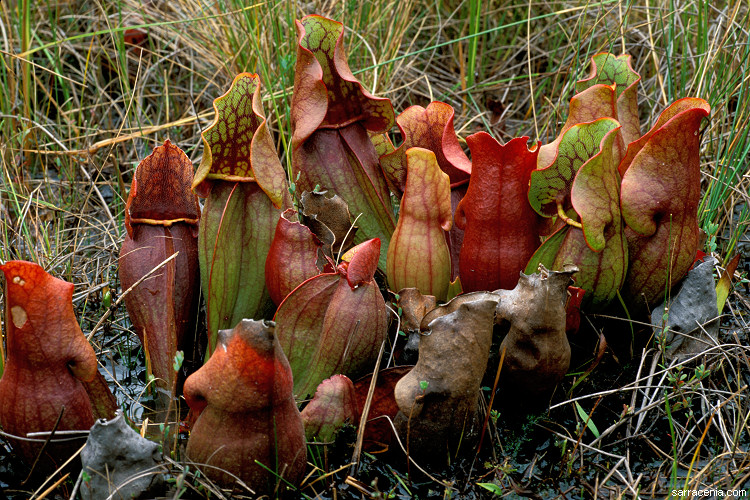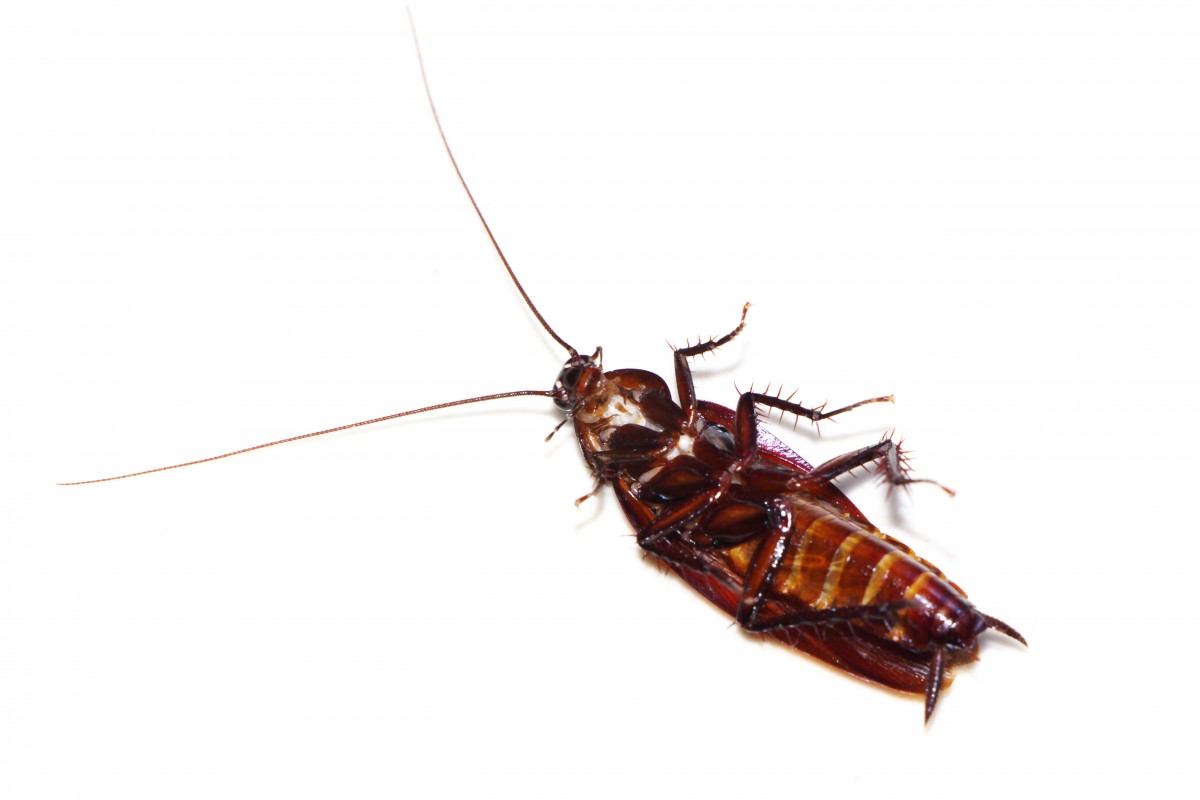
With the passing of Victoria Day, we in southern Ontario re now safely in the “no frost” zone of the calendar. I am loving all the flowers and happy green leaves filling the gardens and roadsides I pass daily. Equally happy, though considerably more distressing to see, are the invasive species trying to edge out all those lovely native plants—including the dastardly dog-strangling vine, and garlic mustard. (Unfortunately, not the tasty kind that we make!) At the moment, all we can do to battle these two invaders is personally pull each of them out, roots and all, seal them in plastic, and throw them in the garbage. Which is pretty effortful, and sets a high bar for effectively eliminating them.
But a team of researchers from Australia (a country that knows a thing or two about invasive species) may have great news for us. They’ve developed a brand new type of weed killer—incredibly, based on an antibiotic that was developed for tuberculosis! The molecule failed out of the lab but showed promise for this new, but chemically similar, application. Its attack-the-bad-guys capability was tweaked to hone in on two of Australia’s most problematic weeds, annual ryegrass and wild radish. The formulation has proven effective at the targeted assassination of these two weeds. Scientists are now excited about what this development means for agriculture, in an age when food resources are ever more precious, and weeds are developing greater resistance to standard herbicides.
“Researchers at the [University of Adelaide] Herbicide and Antibiotic Innovation Lab discovered there were similarities between bacterial superbugs and weeds at a molecular level.
They exploited these similarities and, by chemically modifying the structure of a failed antibiotic, they were able to block the production of amino acid lysine, which is essential for weed growth. […]
‘The short-cut strategy saves valuable time and resources, and therefore could expedite the commercialisation of much needed new herbicides,’ said [lead researcher Dr Tatiana] Soares da Costa.
‘It’s also important to note that using failed antibiotics won’t drive antibiotic resistance because the herbicidal molecules we discovered don’t kill bacteria. They specifically target weeds, with no effects on human cells,’ she said.”
The researchers estimate that weeding costs the Australian agriculture industry $5 billion AUD annually. What massive savings could be anticipated if the vast majority of those weeds… simply never exist! Of course, saving money is king here, but thankfully the environment comes out ahead too. Isn’t it great when we can turn our ingenuity towards supporting our planet, instead of draining it? I’m looking forward to this technology being adapted to other weeds in other countries. Next time I drive past those miserable dog-strangling vines, I’m going to enjoy yelling out the window that their days are numbered!
As the war in Ukraine rages on, we who don’t live there watch each terrible development from afar, while experiencing the immense privilege that that distance affords us. It’s easy to max out on the awful things that humans can inflict on other humans, and take refuge in our friends, families, media, hobbies, and media, all far away from the bloodshed. While that impulse is very human, it’s just as human (as Mr. Rogers once put it so eloquently!) to try to help.
That’s what Fuminori Tsuchiko has done, in his own unique way. The 75-year-old Japanese man has opened a cafe in the Ukrainian city of Kharkhiv. There, he gives out free food to residents trying to snatch a bit of normalcy amid the upheaval. The snacks and meals he serves are nourishing not just because of the usual calories and vitamins, but, as the food is all sourced by donation, it represents the goodwill of donors around the world!
“For months, he said, he lived in a metro station and worked as a volunteer distributing food in the subway.[…]
‘June, July, August, September, October, November, December—(for) seven months I stayed in the metro, underground, sleeping or eating, and together (with) many, many Ukrainian people,’ Tsuchiko said.
FuMi Caffe serves about 500 people a day, he said.
Tsuchiko said he had been visiting Ukraine as a tourist in February 2022, when the Japanese embassy urged him to leave as Russia prepared to invade. He went to the Polish capital Warsaw but said he returned two months later.”
The amount of courage it takes to remain in a war zone to help others when your own country tries to get you to leave is staggering. But I can only imagine the extra bravery required if you’re a senior! And Mr. Tsuchiko doesn’t seem to be planning on leaving, as long as he’s needed. While I’m glad he’s there, I fervently hope that the war in Ukraine ends as soon as possible, for everyone involved—including the kind-hearted volunteer doing his bit supporting a shattered community, by invoking the comforting power of food.
Way out here in the colonies, it’ll take a significant effort to show up for the biggest event in the Commonwealth in 70 years—the coronation of King Charles III. The American in me looks askance at the whole thing, but the real deciding factor is having to get up in the middle of the night in order to catch the festivities on the, ahem, “telly.” I may find a different way of celebrating, perhaps by whipping up a Coronation Quiche; the newly minted monarch’s official dish. (Or maybe 1953’s viral recipe, his mother Queen Elizabeth II’s Coronation Chicken!)
What I definitely won’t be consuming is another crown-related comestible, which was uncovered in the Greene King brewery cellar in southeastern England 2011 and will be auctioned off this week: beer brewed for the coronation of Edward VII, 86 years ago. Because of convoluted reasons both personal and professional, Edward VIII abdicated the throne of the United Kingdom in the window after he acceded and before his coronation could actually happen—thus relegating both himself and the beer brewed in his honour to a far more boring fate. Until now!
“‘This really would have been a fantastic beer in its day,’ Greene King’s then-head brewer John Bexon said in 2012. ‘It was 12% when it was brewed so is quite strong and has kept really well. The rich fruit flavor still stands out.’
Whoever ends up buying the beer will have to take Bexon’s word for it: Greene King said that the brew is ‘no longer drinkable,’ and the bottles are being sold purely as collector’s items. According to The Telegraph, Greene King does have an updated version of Coronation Ale, which has been brewed for King Charles’ crowning next month; it will be available to buy in pubs and online.”
Greene King’s 2023 brew sounds positively refreshing, with hints of tropical fruit and citrus, and a (much!) lighter ABV of 4%. It’s too bad buyers of the 1937 version are steered away from opening their bottles—wouldn’t that be a fascinating fantasy flight? After a hearty sleep-in on Saturday, I may lift a quiche-accompanying glass to Charles… Supporting the monarchy aside, everyone deserves a cheer when they land a new job!

Spring has sprung in our neck of the woods. Plants of all kinds are budding, blooming, and otherwise making their presence known. This period of explosive growth still surprises me every year, and reminds me that—much like humans—plants need food to fuel themselves too! And, as a new study has shown this week, some plants may be as picky as humans about the food they consume, and may also modify their own “behaviour” to score living snacks that have the nutrients they need most.
A team of French researchers studied North American Sarracenia pitcher plants under lab conditions. These notorious carnivorous plants grow slippery sets of leaves that look like a delicious trumpet-shaped flower, fooling unsuspecting insects into coming in for a snack. The poor suckers then fall into a pool of enzymes at the bottom of the “flower” and are slowly digested by the plant. It’s  long been established that different types of Sarracenia trap different kinds of insects—pollinators vs. ants, for example. But this study posits an unexpected way Sarracenia may be luring bugs to their watery doom—highly tailored scents, or volatile organic compounds (VOCs).
long been established that different types of Sarracenia trap different kinds of insects—pollinators vs. ants, for example. But this study posits an unexpected way Sarracenia may be luring bugs to their watery doom—highly tailored scents, or volatile organic compounds (VOCs).
The team tested four different kinds of Sarracenias; two naturally occuring, and two human-crafted hybrids.
“The study team placed each plant in an airtight bag and pumped purified air through it. The odor-causing molecules produced by the plants were trapped on filters for the researchers to analyze and identify. The team found that the different pitcher plant species each produced their own unique bouquet of VOCs. […]
The researchers then compared the VOCs produced by each plant with the types of insects it caught. The species that produced more floral scents trapped more bees, moths and other flying insects; pitchers that produced more fatty acids caught more ants. These results held up even when the researchers took into account the way that the pitchers’ size and shape might limit what sorts of insects they could easily trap.”
The authors acknowledge this is early days yet; a study like this shows a strong correlation and more work is required to establish causation. But the possibility that Sarracenia may be “ordering” what they crave off the local bug menu via the powerful method of scent is pretty cool! It definitely shortens the gap between us and other life with whom we share this delicate planet. If, in the long run, all this proves is the need for more human empathy for our ecosystem… Well, I’ll take that too!
Now, I like me a bit of Italian food, but what Australian startup Vow served up at a science museum in Amsterdam this week is a tall order! The company unveiled a mammoth meatball—in the sense that, yes, it was enormous, but it was also literally made out of mammoth. Vow is one of many companies that are throwing their weight behind cultivated meat: that is, meat that is vat-grown, from starter cells harvested from living animals. This means less cruelty and environmental impact end up on your plate.
from living animals. This means less cruelty and environmental impact end up on your plate.
The woolly mammoth is clearly extinct, but the cell harvesting and growing worked much the same way.
“Vow used publicly available genetic information from the mammoth, filled missing parts with genetic data from its closest living relative, the African elephant, and inserted it into a sheep cell, [Vow’s founder Tim] Noakesmith said. Given the right conditions in a lab, the cells multiplied until there were enough to roll up into the meatball. […]
The mammoth meatball is a one-off and has not been tasted, even by its creators, nor is it planned to be put into commercial production. Instead, it was presented as a source of protein that would get people talking about the future of meat. […]”
‘[The woolly mammoth has been traditionally a symbol of loss. We know now that it died from climate change. And so what we wanted to do was see if we could create something that was a symbol of a more exciting future that’s not only better for us, but also better for the planet,’ [Noakesmith] added.”
The huge sphere of meat was unfortunately not edible—a combination of being glazed before being shipped from Sydney to Amsterdam, and the fact only Singapore has okayed the human consumption of cultivated meat. But, the creators report that, while they were cooking the meatball, the aroma that filled the test kitchen was delicious, and similar to another unusual meat: crocodile. Hopefully, eaters will follow their taste buds to a new (old!) protein source, and the market for a more ethical meat will follow!

As anyone who’s lived in a terrible student apartment can attest, cockroaches are just as interested in your food as you are, if not more so. Turns out, Keith Richards’ post-apocalyptic army has a particularly strong sweet tooth—strong enough to defeat the brains and brawn of the human-run pest control industry!
This happened through a unique and circuitous route. Male German cockroaches secrete a sticky, maltose-filled residue on their abdomens to attract interested mates. When a female consumes the goo, it converts to delicious glucose in contact with her saliva, all while she gets in the perfect position for the male to mate with her—next generation achieved. The pest-control industry took advantage of this fact since the 1980s, creating a whole raft of glucose-based poison bait traps to lure hungry (and lustful) roaches to their doom. As a result, research later showed, a strain of cockroaches started tasting glucose as repellently bitter, turning them off the traps—and the males offering the standard mating goo. But all was not lost for all those cockroach babies yearning to be born. Enter evolution.
secrete a sticky, maltose-filled residue on their abdomens to attract interested mates. When a female consumes the goo, it converts to delicious glucose in contact with her saliva, all while she gets in the perfect position for the male to mate with her—next generation achieved. The pest-control industry took advantage of this fact since the 1980s, creating a whole raft of glucose-based poison bait traps to lure hungry (and lustful) roaches to their doom. As a result, research later showed, a strain of cockroaches started tasting glucose as repellently bitter, turning them off the traps—and the males offering the standard mating goo. But all was not lost for all those cockroach babies yearning to be born. Enter evolution.
“Males that also avoid glucose possess genetic mutations that allow them to make gooey gifts composed mostly of a more complex sugar called maltotriose, which the female’s saliva cannot as readily break down into glucose. With no glucose to turn them off, the females stick around for the males to do their thing. Moreover, these males get into a mating position much more quickly than those that offer typical glucose gifts, the researchers found. Together, these adaptations help glucose-averse cockroaches successfully mate, which should make roaches that avoid sugary bait more and more common.”
This turn of events is documented in the most recent Proceedings of the Royal Society B. And while it’s excellent news for Blatella germanica, it’s terrible for us: pest control needs to pivot from the sure bet of sugar traps soon, or our kitchens will be overrun by roaches not just immune to their charms, but outright disgusted by them. I do try to hold a healthy respect for those canny survivors. And I am in awe of the chutzpah it takes to evolve aversion to glucose—a nearly ubiquitous fuel for life forms on earth. But as someone who has a kitchen at home and at work, I hope any and all cockroaches enjoy their maltotriose-eating and baby-having as far away from me as possible!
Technological innovation is no stranger to food—in fact cooking itself was a major tech game changer that may have allowed humans to grow the giant brains that are the hallmark of our species! Now, a bleeding-edge takeout startup is harnessing the power of AI to deliver note-perfect replicas of famous chefs’ dishes to hungry customers—with nary a one of those chefs in sight. 
The company is CloudChef, and is a hi-tech version of the ”ghost kitchens” that have cropped up, especially in the wake of the pandemic. Based (naturally) in Palo Alto, the team behind it envisions leveraging technology to drastically change the American restaurant scene.
“Through a combination of software and hardware—as in basic kitchen equipment that’s been souped up with sensors and cameras—CloudChef can record someone cooking a dish one time, then turn around and produce what the company calls ‘a machine-readable recipe file.’ The data capture not only includes video, but also information from infrared and thermal sensors, scales, and other equipment that allows the software to measure temperature and weight. The result is a set of digital cues delivered through the enhanced kitchen equipment that guide CloudChef kitchen staff, regardless of culinary skill, as they stand in front of a burner with a pan and recreate the dish. […]
There’s no need to understand when the chicken achieves doneness or when the curry reaches the ideal thickness; the software does that using data from sensors that measure the thermal temperature of ingredients in the pan and the relative weight of the food as it cooks down. When the sauce reaches the appropriate thickness, a sound alerts the cook and a message appears on a screen telling the worker to remove the pan and food from the heat.”
This innovation could be a massively democratizing force in the restaurant world, decoupling the experience of a signature dish from the need to physically share the chef’s location. But, is that dish truly the same as one prepared by the person who created it—or who at least has baseline cooking skills? Is something—maybe its aura, or soul?— missing if it gets mechanically reproduced? Are we one step away from Star Trek’s replicator technology? Is the delegated food even any good? As companies wade into the AI space, philosophical questions abound. At least we can contemplate this set on a full stomach.
For a people bent on projecting whimsicality—cuckoo clocks and Heidi, anyone?—the Swiss are sure coming down hard on former Alpine ambassador product, Toblerone. The triangular bars of chocolate-honey-nougat-amazingness have fallen recently fallen afoul of Switzerland’s “Swissness Act.” This 2017 law requires companies who claim their products are Swiss-made through labelling to meet strict standards of in-country manufacture. Mondelez International, the American (!) company that owns Toblerone, is moving the majority of the chocolate brand’s manufacturing to Slovakia this summer. In response, the Swiss government is stripping Toblerone’s packaging of its most iconic image: the Matterhorn.
“Those regulations aim to protect the credibility and value of the coveted Swiss label, its government explains, citing studies that show the value added by the Swiss branding can represent as much as 20% of the sale price for certain products — and up to 50% for luxury goods — compared to those from other places.
When it comes to food products specifically, at least 80% of raw materials must come from Switzerland, and 100% for milk and dairy. The essential processing must also be done inside the country, with few exceptions (and Toblerone chocolate is evidently not one of them). […]
The company has yet to unveil its new design, but says it will still pay homage to its Alpine roots with ‘a modernized and streamlined mountain logo that is consistent with the geometric and triangular aesthetic.’
It will also keep its ‘famous hidden bear,’ a tribute to the bar’s birthplace of Bern, which you can see if you look closely at the shadows of the Matterhorn.”
Mondelez seems to be leaning into the regulation, stating that they look forward to refreshing the design in ways that echo the chocolate’s Swiss heritage, but don’t claim it to be current. And confectionados will be thrilled to hear that they aren’t touching the recipe! I don’t know about you, but I’ll gladly take a cosmetic overhaul over reformulating the best part of a golden-age Swiss Chalet Festive Special any day.

Mushrooms are definitely having a moment. It seems like everyone in the business world and beyond is talking about entheogens and expanding consciousness with judicious use thereof. This week’s story also happens to be about a magical mushroom changing our brains—but, calm down, Ken Kesey—it’s way more delicious than plant medicines can be!
The mushroom in question is the round and fluffy lion’s mane, a staple of farmer’s market stalls, with a delicate texture and a meaty flavour akin to fresh seafood. Long used in extract form in Traditional Chinese Medicine, the shroom has now been studied by a team from Queensland University. Their study has confirmed the TCM use of lion’s mane as a brain booster—showing that organic compounds found in the humble Hericium erinaceus can actually literally help regrow damaged or injured brain cells.
“The Queensland researchers isolated the compounds from the mushrooms they believed were behind its purported brain health-assisting properties. The researchers then placed the isolated compounds into a Petri dish with sets of cultured brain cells to see what would happen. And to their surprise, something incredible occurred.
‘Surprisingly we found that the active compounds promote neuron projections,’ said [study lead author Frederic] Meunier, ‘extending and connecting to other neurons.’
To get a closer look at what was actually happening, the researchers placed the treated brain cells under a super-resolution microscope. And according to Meunier, ‘we found the mushroom extract and its active components largely increase the size of growth cones, which are particularly important for brain cells to sense their environment and establish new connections with other neurons in the brain.’”
This could be a game changer for folks experiencing Alzheimer’s, or the fallout from a brain injury. Imagine incorporating a dash of mushroom extract into your diet to help support and restore cognition! The researchers also make the excellent point that science shouldn’t discount traditional remedies, and rather take their use as a signal that there’s an empirical basis for how they work. I love how a Lion’s Mane is a triple threat—cute, delicious, and a lifesaver. A psychedelic would just be overkill!

Over the last few months, we’ve seen a levelling up of AI in our puny human lives. From putting visual artists out of a job, to haunting our nightmares, artificial intelligence is finding all kinds of new applications serving—and potentially supplanting?—our purposes. But a brewery in British Columbia has found a way to harness the unnerving powers of AI for good, by charging chatbot ChatGPT to come up with a beer recipe worthy of the Whistle Buoy Brewing name. And, unlike its hilariously clunky “can’t draw hands” brethren, ChatGPT came through, generating a “fluffy, tropical” brew that the Whistle Buoy crew is duly serving up to its emphatically human customers. From the CBC:
worthy of the Whistle Buoy Brewing name. And, unlike its hilariously clunky “can’t draw hands” brethren, ChatGPT came through, generating a “fluffy, tropical” brew that the Whistle Buoy crew is duly serving up to its emphatically human customers. From the CBC:
“Whistle Buoy Brewing partner Isaiah Archer says his team had been playing around with the program ChatGPT, hoping it would help with developing product descriptions and writing social media posts, when they were inspired to try something else.
‘As we were typing various things into it, we thought, let’s see what happens if we ask it to give us a beer recipe,” he told CBC’s Rohit Joseph. They asked for a fluffy, tropical hazy pale ale. It spat out a recipe that, for the most part, works. […]
The recipe wasn’t perfect — Archer said it initially gave measurements for a homebrew batch. When it was adjusted for a larger brewing operation, he said it didn’t quite make sense, so they had to make some changes.
‘We had to add some human intervention,’ Archer said.”
The AI accepted that intervention, and thankfully didn’t go Skynet on us, thus eliminating the beer industry entirely. But tacky sentience jokes aside, the brewery’s owners appreciate ChatGPT’s “solid” work and are interested in a further collaboration that complements human ingenuity rather than cancels it out. From DFC’s perspective, I’d be very interested to test an AI on its condiment-inventing skills…I may pop over to ChatGPT and ask for a mustard recipe—I’ll report back if anything especially delicious comes up!